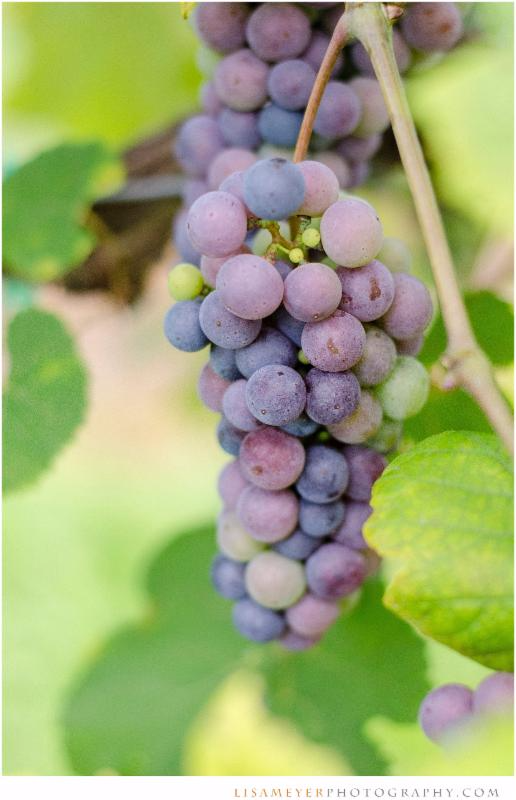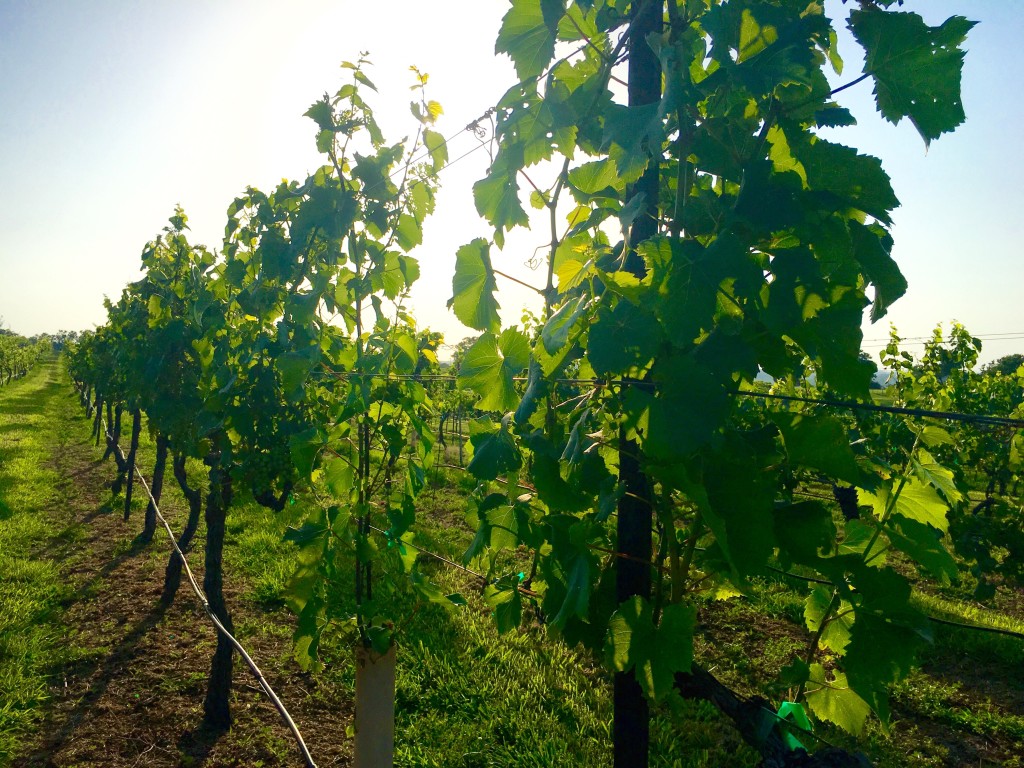What is veraison?

Veraison Explained
Right around the first of August every year we enter a new phase in the viticultural cycle. It is called veraison (originally a French term spelt véraison) and it involves a number of changes in the grape itself. First, the grapes start to color. That is, the Norton and Chambourcin start to show a deep red almost black color. The Chardonel, Vignoles and Traminette move toward a deep golden color. This process takes a couple of weeks to develop.
Changes in Fruit
During veraison, the fruit increases in size. With some varieties, the increase is as much as 50% and the grapes themselves soften to a level similar to eating grapes. The sugar in the grapes rises dramatically. Prior to veraison, the grapes have only a tiny amount of sugar but by harvest, about 23% of the grape itself will be sugar. This is very important because the amount of sugar dictates what the amount of alcohol in the finished wine will be. Using very efficient yeasts, we apply a factor of .60 to determine what the alcohol level is approximately going to be in the wine. Another way to say this is, we multiply the sugar level times .60 and that will give us a pretty good approximation of the alcohol level. For example 23.5 X .60 = 14.1% alcohol. These numbers are important because it is primarily the amount of alcohol that determines the mouthfeel in the finished wine. For example, a sugar level of 21% will yield only 12.6% alcohol and a sugar level of 19% will yield a little over 11% alcohol, which will probably produce a wine with an unacceptable mouthfeel. That is a watery sensation rather than a wine that has real viscosity, weight on your tongue, and a mouth-coating sensation.
 As veraison progresses, the amount of acid in a wine gradually decreases. In white & red wines we look for a level of about 7 grams per liter. During the month of August and into September the ph level of the juice will increase. In white wines, we look for approximately 3.30ph and in red wines 3.5ph.
As veraison progresses, the amount of acid in a wine gradually decreases. In white & red wines we look for a level of about 7 grams per liter. During the month of August and into September the ph level of the juice will increase. In white wines, we look for approximately 3.30ph and in red wines 3.5ph.
As you can see there is a tremendous amount going on with the grapes in the month of August and early September. We start monitoring some of these levels of chemistry about halfway through the month. In the period leading up to harvest, we will sample and analyze fruit every 2 to 3 days. Once we reach the chemistry that we want, we start tasting the grapes in earnest. The final decision is organoleptic. We can taste the grapes every day and then suddenly one day there is a new complexity and multi-dimensional character in what we taste. That is the signal to go get them, and harvest begins.


As a home winemaker I find your postings to be interesting and educational.
We love to hear that. We will be sure to post some more educational grape growing/winemaking material. Thanks for reading!